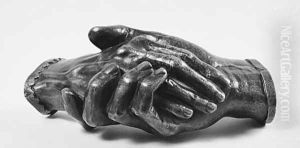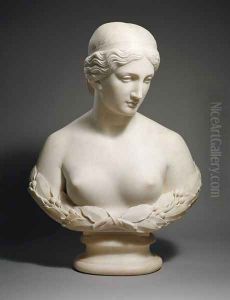Harriet Goodhue Hosmer Paintings
Harriet Goodhue Hosmer was a prominent American sculptor in the 19th century, known for her neoclassical marble works. Born on October 9, 1830, in Watertown, Massachusetts, she was a pioneering figure in a field dominated by men. Her interest in sculpture began at an early age, encouraged by her father, a physician, who supported her education and artistic pursuits. Unlike many women of her time, Hosmer received a comprehensive education, including anatomy studies, which was unusual and somewhat controversial for women in that era. This background helped her achieve a high level of realism in her sculptures.
Hosmer moved to Rome in 1852, which was a center for American artists abroad, particularly those interested in the neoclassical style. Rome offered her professional opportunities and a social circle of influential expatriates and artists, including the famous actress Charlotte Cushman and the sculptor John Gibson, who became her mentor. In this vibrant artistic environment, Hosmer was able to fully develop her talents and embark on a successful career, making works that often featured themes of female strength and independence.
Among her most celebrated works are “Oenone,” “Beatrice Cenci,” “Zenobia in Chains,” and the monument to Missouri senator Thomas Hart Benton in St. Louis. “Zenobia in Chains” (1859), one of her masterpieces, exemplifies her skill in portraying powerful historical and mythical women, capturing the former queen of Palmyra in a moment of dignified defeat. This piece, in particular, showcased Hosmer’s ability to convey intricate details and emotional depth, earning her praise and recognition in both Europe and the United States.
Despite facing gender-based discrimination and skepticism about whether her works were indeed her own—a common accusation against female artists of the time—Hosmer achieved considerable fame and success. She was an outspoken advocate for women's rights and independence, embodying the very qualities she depicted in her sculptures. Her home in Rome became a gathering place for other expatriate artists and writers, making her an integral part of the city's cultural life.
Harriet Goodhue Hosmer passed away on February 21, 1908, leaving behind a legacy that transcended her sculptures. As one of the first female professional sculptors, she broke barriers for women in the arts, inspiring future generations with her dedication to her craft and her fight for recognition in a male-dominated field. Her work continues to be celebrated for its artistic merit and its role in challenging 19th-century gender norms.

